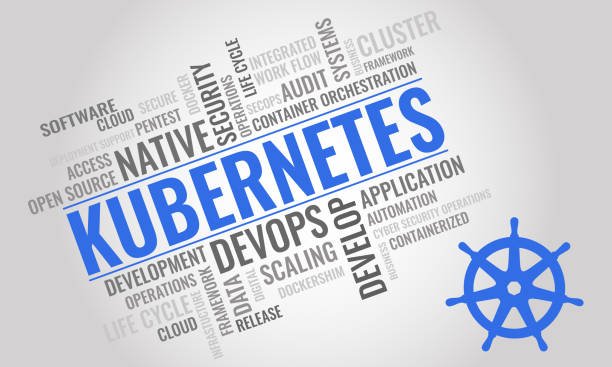Currently Empty: ₹0.00
Container Orchestration
Kubernetes – The Backbone of Modern Cloud Infrastructure

In today’s fast-paced software world, agility, scalability, and reliability are no longer nice-to-haves—they’re requirements. As organizations transition from monolithic applications to microservices, the need to manage containerized applications at scale becomes essential. Enter Kubernetes, the open-source system that has become the gold standard for container orchestration.

🔍 What Is Kubernetes?
Kubernetes (often abbreviated as K8s) is an open-source platform developed by Google and now maintained by the Cloud Native Computing Foundation (CNCF). It’s designed to automate deploying, scaling, and operating containerized applications. Think of it as a control plane for managing containers like Docker across a fleet of machines, whether on-premise or in the cloud.
At its core, Kubernetes helps answer vital questions:
-
How do I automatically scale my app when traffic spikes?
-
What happens if a container fails?
-
How do I update my application without downtime?
⚙️ Key Concepts of Kubernetes
To understand Kubernetes, you need to grasp its building blocks:
1. Pods
The smallest deployable unit. A Pod can contain one or more containers that share the same network and storage.
2. Nodes
Machines (VMs or physical) where Pods run. Each Node is managed by the Kubernetes Master.
3. Cluster
A set of Nodes controlled by a master node (control plane).
4. Services
An abstraction that defines a logical set of Pods and a policy to access them. This ensures reliable communication between components.
5. Deployments
They define the desired state for your app (e.g., running 5 replicas) and allow rolling updates and rollbacks.
6. Namespaces
Provide a way to divide cluster resources between multiple users or projects.
🚀 Why Use Kubernetes?
Kubernetes is powerful—but why has it become so dominant?
✅ 1. Scalability
Whether you’re running 10 containers or 10,000, Kubernetes can scale your applications automatically based on load.
✅ 2. High Availability
With built-in health checks, self-healing capabilities, and redundant design, Kubernetes ensures your app stays up even if parts of your infrastructure fail.
✅ 3. Portability
Because it runs on virtually any infrastructure, you can develop on your laptop, test in the cloud, and deploy in a hybrid environment.
✅ 4. Extensibility
Kubernetes is modular and highly extensible, with thousands of open-source add-ons like Helm (package management), Prometheus (monitoring), and Istio (service mesh).
✅ 5. DevOps-Friendly
It integrates well with CI/CD pipelines, enabling automated testing, deployment, and rollback.
🧱 Kubernetes in the Real World
Companies like Google, Spotify, Airbnb, and The New York Times run massive portions of their infrastructure on Kubernetes. Even smaller teams benefit from its abstractions and efficiency, especially when adopting GitOps or Infrastructure as Code (IaC) practices.
For example, you can:
-
Use Helm charts to deploy complex apps in minutes
-
Monitor container health and performance with Prometheus and Grafana
-
Secure applications with RBAC (Role-Based Access Control) and network policies
🛠 Getting Started with Kubernetes
If you’re new to Kubernetes, here are some steps to dive in:
-
Install Minikube – a local Kubernetes setup for learning and testing.
-
Learn kubectl – the command-line tool for interacting with your cluster.
-
Try a Hello World app – deploy a simple web server.
-
Explore tutorials – Kubernetes.io has excellent documentation and examples.
📉 Challenges with Kubernetes
Kubernetes is powerful but not simple. You might encounter:
-
A steep learning curve
-
Complex networking and security configurations
-
Resource overhead for small apps
That’s why managed services like Google Kubernetes Engine (GKE), Amazon EKS, and Azure AKS are popular—they abstract much of the operational burden.
🌐 Final Thoughts
Kubernetes has fundamentally changed how we build and operate software. It’s more than just a tool—it’s an ecosystem, a methodology, and a philosophy. While it may be complex at first, the benefits in scalability, reliability, and developer productivity make it worth the investment.
Whether you’re just starting your container journey or running enterprise-grade workloads, Kubernetes is likely to be a critical part of your infrastructure in the years to come.




